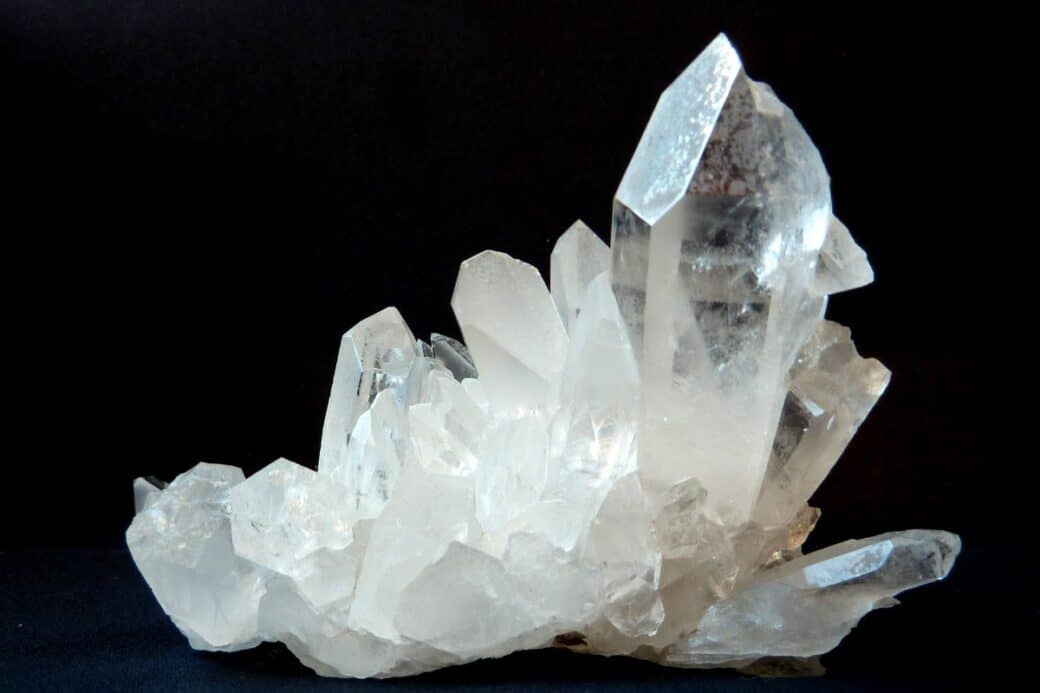Imagine yourself transported to a magical workshop, where skilled artisans transform ordinary crystals into extraordinary instruments. In this captivating article, you will explore the fascinating world of crystal singing bowls and discover the intricate craftsmanship behind their creation. Delve into the secrets of this ancient art form as you learn how these captivating bowls are meticulously crafted to produce enchanting sounds that soothe the soul. Prepare to be amazed as we uncover the meticulous techniques and boundless creativity involved in mastering the craft of making crystal singing bowls.

How Are Crystal Singing Bowls Made: Understanding the Crystal Singing Bowl
What are crystal singing bowls
Crystal singing bowls are musical instruments made from a type of quartz crystal. They produce beautiful, soothing sounds that can be used for meditation, relaxation, and sound therapy. When the rim of the bowl is struck or rubbed with a mallet, the quartz crystal vibrates, creating a resonance that is not only audible but can also be felt throughout your body.
History of crystal singing bowls
The use of quartz crystal for healing and music can be traced back to ancient civilizations such as the Egyptians, Greeks, and Indigenous cultures. However, the modern crystal singing bowl as we know it today was developed in the late 20th century. The bowls gained popularity in the healing and spiritual community due to their unique vibrational qualities.
Usage of crystal singing bowls
Crystal singing bowls have various applications in both personal and professional settings. They are often used in meditation practices to promote relaxation and focus the mind. Additionally, sound healers and therapists incorporate crystal singing bowls into their sessions to induce deep relaxation, balance energy centers, and promote overall well-being. Whether you are a novice or an experienced practitioner, crystal singing bowls offer a powerful tool for self-care and spiritual exploration.
Raw Materials in Crystal Singing Bowl Production
Types of crystals used
The most commonly used crystal in the production of singing bowls is quartz. Quartz crystal possesses unique properties that make it ideal for creating musical instruments. The purest and highest quality of quartz used in crystal singing bowls is often referred to as “clear” or “transparent” quartz. However, manufacturers also utilize other types of quartz, such as frosted or colored quartz, to create different tones and aesthetics.
Other necessary materials
In addition to quartz crystal, several other materials are essential for the production of crystal singing bowls. These include a resinous substance called binder, as well as trace elements such as silica and various minerals. The binder acts as a bonding agent, holding the crystal particles together during the manufacturing process. These materials are carefully selected to ensure the durability, resonance, and clarity of the final product.
Sourcing of materials
Sourcing high-quality materials is crucial for producing exceptional crystal singing bowls. Manufacturers carefully select their suppliers to ensure that they receive ethically sourced quartz crystals. Responsible sourcing practices prioritize the well-being of the environment and the communities involved in the mining process. By supporting sustainable and eco-friendly practices, crystal singing bowl manufacturers contribute to the preservation of natural resources and the protection of indigenous communities.

The Process of Making a Crystal Singing Bowl
Grinding down the crystal
The first step in creating a crystal singing bowl is grinding down the quartz crystal into fine particles or powder. This process is necessary to achieve the desired shape and thickness of the bowl. Grinding the crystal requires precision and expertise to ensure an even distribution of particles, as it directly affects the bowl’s sound quality.
Melting into a mold
After the crystal is ground, it is melted in a high-temperature furnace and carefully poured into a mold of the desired shape. This process requires skill and precision to ensure that the crystal melts evenly and is free from impurities. The molten crystal is poured into the mold and left to cool and solidify.
Shaping the bowl
Once the crystal has cooled and solidified, it is removed from the mold and undergoes a shaping process. Skilled artisans use various tools to shape the crystal into a bowl-like form, which includes smoothing the edges and refining the overall shape. This step requires attention to detail to create bowls of different sizes and thicknesses, each with its unique resonance.
Cooling and annealing process
To enhance the structural integrity and resonance of the crystal singing bowl, it undergoes a cooling and annealing process. This process involves gradually cooling the bowl, allowing it to stabilize and relieve internal stresses. Annealing also improves the clarity and resonance of the crystal, resulting in a higher-quality musical instrument.
Creation of Tones in Crystal Singing Bowls
Importance of bowl thickness and shape
The thickness and shape of the crystal singing bowl significantly impact the tones it produces. Thicker bowls tend to produce lower, deeper tones, while thinner bowls create higher, more melodic tones. Bowl shape also plays a role, as bowls with a larger opening tend to have a richer and more resonant sound. Exploring different bowl thicknesses and shapes allows for a diverse range of tones and musical expressions.
Variation of tones based on size
Crystal singing bowls come in various sizes, and each size emits a different tone frequency. Smaller bowls generally produce higher pitches and are ideal for sound therapy and meditation. Larger bowls, on the other hand, produce lower frequencies that can be felt throughout the body, making them ideal for deep relaxation and grounding practices.
Process of tuning
To ensure that crystal singing bowls produce harmonious tones, they undergo a tuning process. Skilled craftsmen utilize techniques such as sanding, trimming, and adjusting the shape to fine-tune the bowl’s pitch. Tuning each bowl carefully ensures that it produces sounds that are pleasing to the ear and harmonize with other musical instruments.

The Art of Making Colored Crystal Singing Bowls
Use of color-infused quartz
In addition to clear quartz, crystal singing bowls can also be made with color-infused quartz. This technique involves infusing different minerals or metals into the quartz crystal during the production process. The added colors create a stunning visual effect and can enhance the overall experience of playing and listening to the bowls.
Process of adding colors
The process of adding colors to crystal singing bowls is intricate and requires skillful craftsmanship. Pigments or metals are carefully mixed with the resinous binder or applied using specialized techniques. The color-infused quartz is then melted and shaped into bowls. This process ensures that the coloration is evenly distributed and remains vibrant over time.
Variations in color and effect on sound
The choice of colors used in crystal singing bowls can vary greatly, ranging from subtle pastels to vibrant hues. Each color imparts its energy and can evoke specific emotions and sensations. While the addition of colors doesn’t directly affect the sound produced by the bowls, it can create a visual and sensory experience that enhances the overall healing and meditative qualities of the instrument.
Decorator Bowls: Etching and Carving
Process of etching
Decorator bowls are crystal singing bowls that have been intricately etched or carved with intricate designs. This process involves skilled artisans using specialized tools and techniques to create patterns, symbols, or images on the surface of the bowl. Etching adds a decorative element to the bowls and can be customized to suit individual preferences or purposes.
Design considerations
When creating etched crystal singing bowls, various design considerations come into play. Artisans need to consider the placement and size of the design, as well as its visual impact. Additionally, the design’s depth and intricacy can affect the bowl’s resonance, so craftsmen must balance aesthetics with sound quality.
Impact on sound
While etching or carving does not fundamentally alter the sound quality of crystal singing bowls, it can have a subtle impact on resonance. The addition of intricate designs to the bowl’s surface may slightly dampen vibrations and affect the sustain of the sound. However, with skillful craftsmanship, the impact on sound can be minimized, allowing for both aesthetic beauty and optimal sound quality.

Inspection and Quality Control
Standards for high-quality Crystal Singing Bowl
To ensure the production of high-quality crystal singing bowls, manufacturers adhere to specific standards. These standards include criteria such as the clarity and purity of the crystal, consistency in thickness and shape, and the resonance and sustain of the sound produced. A meticulously crafted bowl that meets these criteria is considered a high-quality crystal singing bowl.
Process of inspecting
During the manufacturing process, crystal singing bowls undergo rigorous inspection at various stages. Skilled artisans thoroughly examine the bowls for any imperfections, such as air pockets, cracks, or inconsistencies in shape. Bowls that do not meet the desired standards are either reworked or discarded to ensure that only top-quality bowls make it to the market.
Grading and pricing based on quality
Crystal singing bowls are often graded based on their overall quality and sound characteristics. Grades may range from “AAA” for exceptional quality to lower grades for bowls that may have minor imperfections. Prices can vary accordingly, with higher-grade bowls generally commanding a higher price due to their superior craftsmanship, resonance, and aesthetics.
Packaging and Shipping
Securing the bowls for transportation
Given the delicate nature of crystal singing bowls, proper packaging is crucial to ensure they arrive safely to their destination. Bowls are typically secured in specially designed padded boxes to protect them from impacts and vibrations during transportation. Additional cushioning materials such as foam or bubble wrap provide an extra layer of protection against potential damage.
Considerations for international shipping
For international shipping, crystal singing bowl manufacturers carefully consider the various customs regulations and import restrictions in different countries. They ensure that the necessary documentation and certifications are in place to facilitate smooth transit and delivery. By adhering to international shipping guidelines, manufacturers can ensure hassle-free delivery to customers around the world.
Customer satisfaction and returns
Manufacturers of crystal singing bowls prioritize customer satisfaction and acknowledge the importance of returns and exchanges. Should a customer receive a damaged or defective bowl, manufacturers often offer options for replacement or repair. This commitment to customer satisfaction ensures that the journey of each crystal singing bowl extends beyond its creation, fostering lasting relationships with practitioners and enthusiasts.
Training Needed to Master the Craft
Skills required
Mastering the craft of crystal singing bowl making requires a range of skills. Artisans must possess expertise in working with quartz crystal, including knowledge of grinding, shaping, and annealing techniques. They also need a keen understanding of acoustics and sound properties to fine-tune the bowls. Patience, attention to detail, and a passion for creating harmonious instruments are essential qualities for those aspiring to be skilled crystal singing bowl makers.
Time investment
Becoming a master of the craft typically involves years of dedication and practice. The learning process includes working alongside experienced artisans, honing skills through trial and error, and continually refining techniques. The time investment required to master the craft reflects the dedication and commitment needed to create fine-quality crystal singing bowls.
Possible workshops and courses
For individuals interested in learning the art of making crystal singing bowls, workshops and courses are available. These educational opportunities provide hands-on training and guidance from experienced instructors. Through these workshops, aspiring craftsmen can gain practical knowledge, learn traditional techniques, and develop their artistic expression in creating crystal singing bowls.
Environmental Impact and Sustainability Measures
Environmental concerns
Crystal singing bowl manufacturing, like any industry, has environmental implications. Processes such as mining quartz and melting materials have the potential to impact ecosystems and contribute to carbon emissions. Additionally, the extraction of minerals involved in producing color-infused quartz can pose environmental challenges. Recognizing these concerns, manufacturers are actively exploring sustainable practices to minimize their environmental footprint.
Ways to minimize environmental impact
Crystal singing bowl manufacturers are implementing various measures to minimize their environmental impact. This includes utilizing energy-efficient practices in the manufacturing process, optimizing material usage, and prioritizing eco-friendly packaging materials. Additionally, companies are investing in research and development to source quartz and other materials from ethical and sustainable suppliers, reducing their reliance on potentially harmful extraction practices.
Sustainable practices of crystal singing bowl manufacturing
In line with sustainable practices, crystal singing bowl manufacturers are continually seeking innovative solutions to enhance environmental sustainability. Some manufacturers have explored the use of recycled or upcycled materials in their bowls, reducing waste and promoting recycling efforts. Additionally, companies are actively investing in reforestation programs and sustainable energy sources to offset their carbon emissions and promote environmental stewardship.
In conclusion, crystal singing bowls are captivating musical instruments that offer a multitude of benefits for individuals seeking relaxation, meditation, and sound therapy. Understanding the process of creating these bowls, including the sourcing of materials, craftsmanship, and quality control procedures, allows us to appreciate the dedication and skill required to produce these harmonious instruments. As the demand for crystal singing bowls continues to grow, it is heartening to see the industry’s commitment to sustainability, ensuring that the creation of these musical gems aligns with our responsibility to the environment.



